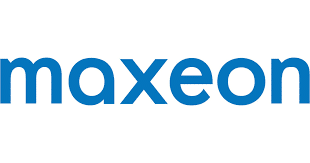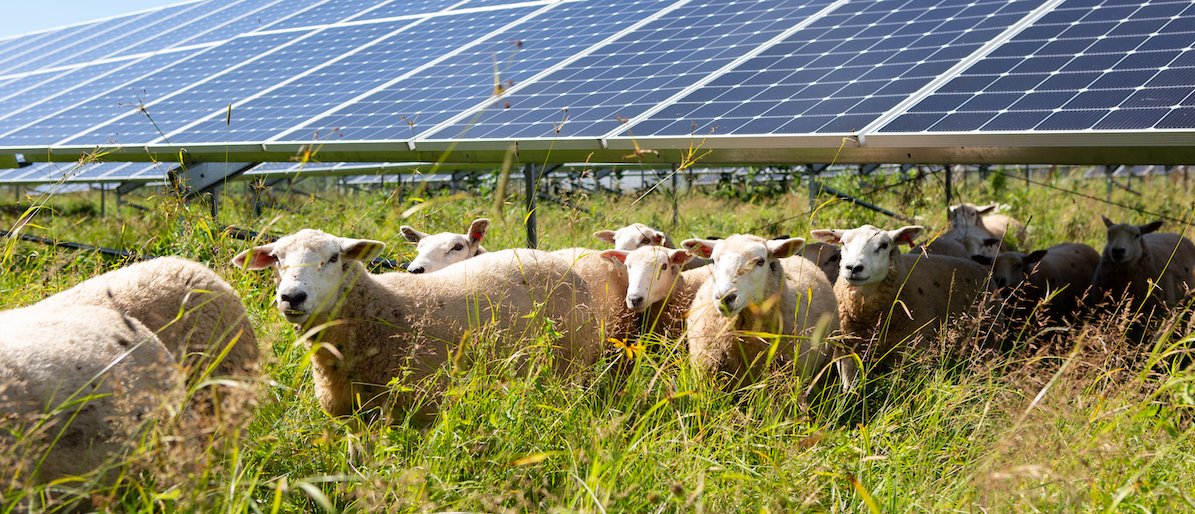A local planning board in southern New Jersey rejected a zoning variance sought by Dakota Power for a 150 MW solar project on an 800-acre site that is part of agricultural retention zone.
The project included plans to have around 1,000 sheep graze the land. Several board members expressed skepticism over the long-term viability of a sheep farm on the property.
“The Pilesgrove Township Planning Board made the right decision to protect their prime farmland from what would have been the largest solar development in New Jersey,” said Tom Gilbert, campaign director New Jersey Conservation Foundation and ReThink Energy NJ.
The New Jersey Legislature is considering a bill (S2605) that would generally preclude solar development on the best soils in Agricultural Development Areas. It would include a waiver that could allow for solar development on around 8,000 acres of these farmlands subject to approval of the Board of Public Utilities.
(Read “Minnesota is primed to turn a page on the conflict between solar growth and farmland preservation.”)
In January, township officials in far western New Jersey approved a $100 million, 70 MW solar farm that also is being developed by Dakota Power Partners. Construction on the Harmony Plains Solar project could start by the end of the year with the project entering service in late 2022. Both the Pilesgrove project and Harmony Plains would sell energy into the PJM grid.
Approval of the Harmony Plains project is being challenged in court by environmental advocates and two residents who said, among other things, that the 600-acre project would adversely impact prime farmland.
In total, Dakota Power is proposing a roughly $1 billion, 1 GW investment in New Jersey that would include utility-scale solar and solar + battery storage projects.
Supply chain costs hit Maxeon Q1 results
Maxeon Solar reported both sharply lower module shipments and corresponding revenues during the first quarter as the company continued to pause its large-scale business in markets outside of the U.S. and China.
Maxeon said that its gross margins were affected by rising supply chain costs.
CEO Jeff Waters said, “Shipment and revenue declines reflected the natural seasonal pattern in our distributed generation business, combined with our ongoing pause in large scale.”
 The company earlier said it would supply around 1 GW of its bifacial Performance 5 UPP solar panels for the $1 billion Gemini solar plus storage power plant project near Las Vegas, Nevada. And it also released its Air technology platform, which the company said enables it to produce frameless, thin, lightweight and conformable solar panels.
The company earlier said it would supply around 1 GW of its bifacial Performance 5 UPP solar panels for the $1 billion Gemini solar plus storage power plant project near Las Vegas, Nevada. And it also released its Air technology platform, which the company said enables it to produce frameless, thin, lightweight and conformable solar panels.
The company said it shipped 379 MW during the first quarter, down from the 531 MW it shipped in the same quarter in 2020 and the 655 MW shipped in the fourth quarter. First quarter revenues were $165.4 million, down from $227.6 million a year earlier and nearly $245.6 million in the fourth quarter.
Net loss attributable to stockholders was $38.8 million in the first quarter. That was up from a reported loss of $31.7 million in the first quarter of 2020. The company reported a nearly $3.5 million net income during the fourth quarter.
The company’s pause in large-scale projects was evident in its breakdown of revenue by markets. The company reported revenues of $19 million in the first quarter of 2020 in Mexico and Latin America. That number fell to $1 million in the fourth quarter and $0 in the first quarter of 2021.
Total revenue in the U.S. and Canada was $59 million in the first quarter. That was down from $71 million in the same quarter of 2020 and $76 million in the fourth quarter.
Maxeon said it expects to ship between 415-475 MW during the second quarter and generate revenue of $165-$185 million. It said it expects out-of-market polysilicon costs to be $16-$19 million leading to an expected gross loss in the range of $5-$15 million.
Kentucky net metering decision
Kentucky regulators set a residential net metering rate of $0.09746 per kWh under a new tariff structure. That was higher than Kentucky Power’s proposed rate of $0.03553 per kWh. The commercial rate was set at $0.09657 per kWh.
The regulatory authority established a compensation rate based on an avoided cost methodology proposed by the utility, but expanded the components that are factored into the rate to ensure what it said would be a “just and reasonable estimate of avoided generation, distribution and transmission capacity, energy, and ancillary service costs, as well as avoided
environmental costs.” The commission said its adjustments addressed issues of “transparency and consistency that were lacking in Kentucky Power’s proposal.”
Under the order, residential and commercial net metering customers taking service after May 15 will be paid for the electricity at the rate established in what is known as NMS II. Net metering customers with generating facilities that were placed in service prior to May 15 will continue to take service under the previous net metering tariff, renamed Tariff NMS I. That tariff is a continuation of past net metering practices where customers are allowed to net their electricity exports against their electricity usage on a kilowatt-hour basis.
Distributed Solar closes tax equity financing
Distributed Solar Development closed $85 million in tax equity financing from Bank of America to support its pipeline of distributed generation solar projects in the commercial and industrial market through 2021. A portion of the financing will go toward New York State Energy Development and Research Authority Value of Distributed Energy Resources assets.
This is the third major financing deal DSD has closed this year. DSD announced a two-year, $300 million debt facility financed by Credit Suisse in January, and a two-year, $150 million construction revolver with Rabobank in March. Both will support DSD’s expanding pipeline of distributed generation solar projects in the C&I market.
Last November, BlackRock Real Assets completed its acquisition of the remaining 20% stake in DSD from GE Renewable Energy. That followed BlackRock’s initial investment in July 2019 for an 80% stake.
This content is protected by copyright and may not be reused. If you want to cooperate with us and would like to reuse some of our content, please contact: editors@pv-magazine.com.









I recall a Japanese farmer setting up raised solar panels on farmland, at least temporarily unusable for food crops, after the Fukushima Daiichi Nuclear Power Plant disaster. He did it on his own land at first, as a means to earn some income, then did the same on all his neighbors farms that he could, if he could contact the owners. The last I heard he was having troubles with changes in the metering rates that favor the wholesale producers. To me it would be more advisable to favor the ability of the farmers to survive the hopefully temporary conditions until they could again grow economically feasible food or other crops. I even imagined being able to put up solar panels on the land of those they couldn’t find the owners for, putting a good portion of the money earned in escrow for eventual payment to the owners, heirs, or who ever the land eventually went to, as a way to keep it producing something useful or at least being maintained for easiest return to more productive use.
Ideally, it would help find ways to make dual use, agricultural and solar, possible for the foreseeable future. If not as effective as imagined, it would seem easy to remove the solar once the land can again be used for more profitable farming techniques.
If any one has any doubts of the “future” of Agrivoltaics (AV)…. please see YouTube Channel zeropollution2050 (one word)… it shows how AV ALONE CAN EASILY PROVIDE ALL THE ENERGY THE WORLD WOULD NEED BY 2050…. FOR ALL IT NEEDS (not just existing Electric customers) by dual use of only 1Million km2 out of the existing 15Million km2 of Farmland around the Globe… with EXISTING TECHNOLOGY…. creating a 150TW AV System Generating 180,000 TWhrs/year of CLEAN..POLLUTION FREE ENERGY IN A SUSTAINABLE MANNER TOO….
Why look elsewhere when this dual use of Farmland could Eliminate Pollution and enhance Farmers Income dramatically…. from Sale of those 180,000TWhrs/yr… generating about $9 Trillion/yr (@USD 0.05/KWhrs) plus Carbon Credits ….
Will the “Financial Institutions”…. get up and “hustle those farmers” and generate about $200 Trillion of Financing around the World…. and do mankind a favour by Eliminating Pollution and Annually prevent ~9 Million Deaths and 275Million DALY of Suffering caused by Pollution…
To put things in perspective… the USA ALONE could produce ALL of the above Solar Energy for the World… (dual) using just 25% of its existing 4 Million km2 of Farmland… (not a good idea… but just to give one an idea of the immense potential to provide a One Technology Option to grow Food and Clean Energy simultaneously)…
However…. one has to be wary of preventing “phony” sheep grazing scams as AV, as proposed in NJ …. let us have some REAL AV Projects that solve mankinds major problems together… Food and Energy (actually it also reduces drastically Water Consumption on Farms too… thereby not only fighting Climate Change but also Global Water Shortage foreseen by many…)…